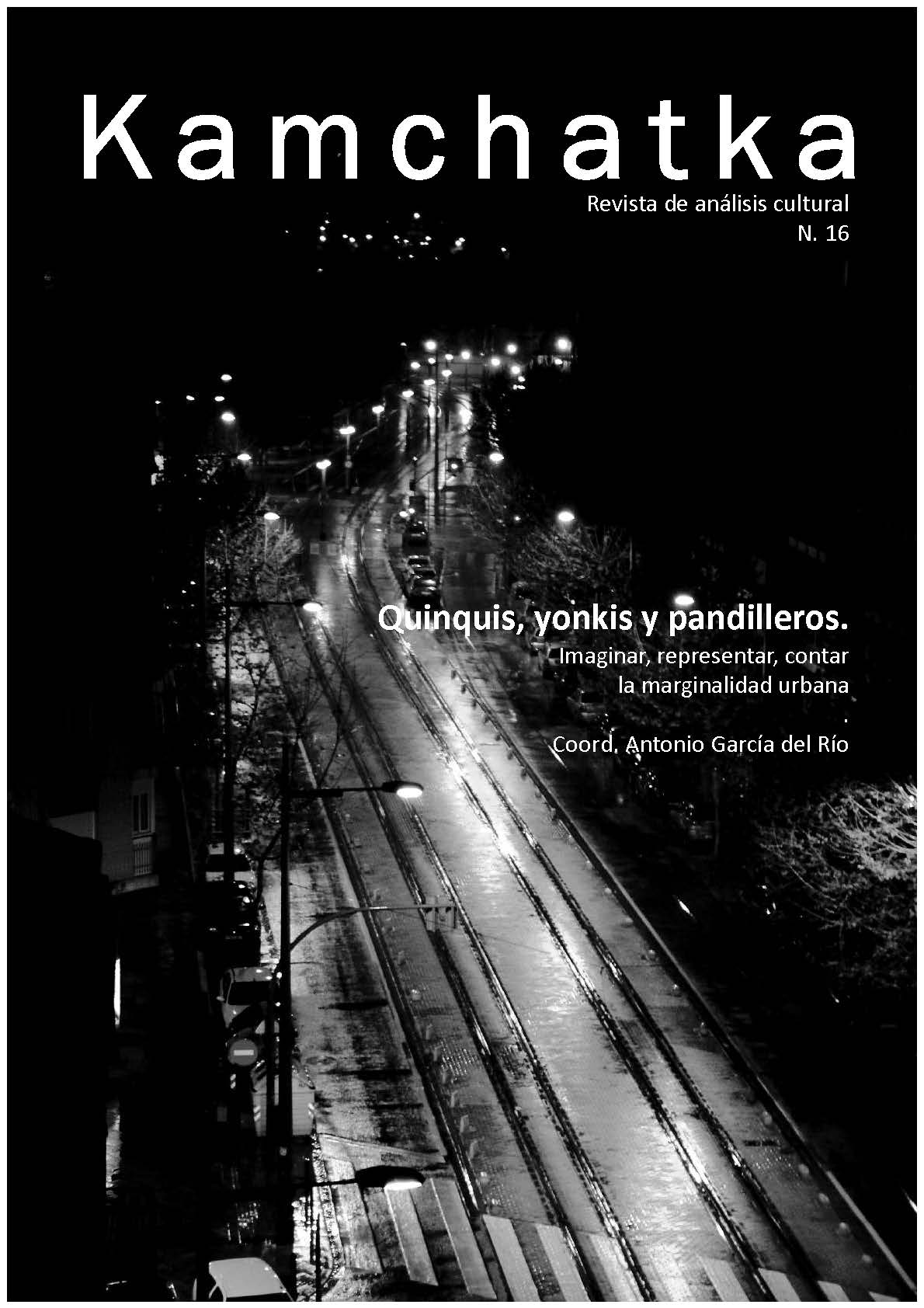Objects-as-witness: fractures and reconstructions of the identity
DOI:
https://doi.org/10.7203/KAM.16.18407Keywords:
objects-as-witness, violence, disappearance, migration, testimonial literature, testimonial photography, testimonial art, memory. Abstract
Abstract
The presentation will be divided into three movements: fractures, reconstructions and archives. Each movement will correspond to a different typology of objects: shoes, nails and beams, clothes. The aim is to show the process of defamiliarization/refamiliarization of some of the objects present in the testimonial stories of Miguel Lawner (Return to Isla Dawson) and Marta Dillon (Aparecida), as well as in a corpus of photographic images ((Javier García, Lourdes Almeida, Gustavo Gutiérrez) and artistic and performative works (Alfredo López Casanova, Colectivo de Hijos, Elina Chauvet, Doris Salcedo). As a whole, they are objects that exhibit resistance and resilience, creations that are opposed to “counter creation” – as Primo Levi defines it – programmed by the concentration-based universe. Through them the autobiographical story broken by the seizure or by the disappearance returns to “get in shape” (Arfuch, 2013), having been centered on the metonymic eloquence of the object.
 Downloads
Downloads
 References
References
Actis, Munë, Aldini, Cristina, Gardella, Liliana, Lewin, Miriam, Tokar, Elisa (2001). Ese infierno. Conversaciones de cinco mujeres sobrevivientes de la Esma. Buenos Aires: Editorial Sudamericana.
Arfuch, Leonor (2013). Memoria y autobiografía. Exploraciones de los límites. México: FCE.
Augé, Marc (1998). Dios como objeto. Símbolos – cuerpos – materias – palabras. Barcelona: Gedisa.
Basile, Teresa (2019). Infancias. La narrativa argentina de HIJOS. Villa María: Eduvim.
Baudrillard, Jean (1981). El sistema de los objetos. México: Siglo XXI.
Benveniste, Émile (1976). Il vocabolario delle istituzioni indoeuropee. Torino: Einaudi.
Castillo Vergara, Isabel (2013). El (im)posible proceso de duelo. Familiares de detenidos desaparecidos: violencia, política, trauma y memoria. Santiago de Chile: Ediciones Alberto Hurtado.
Cavarero, Anna (1997). Tu che mi guardi, tu che mi racconti: filosofia della narrazione. Milano: Feltrinelli.
Chauvet, Elina (2013). “Zapatos rojos, arte público”.
Colectivo de Hijos (2013) . “Presentación del Proyecto Tesoros”.
Dillon, Marta (2015). Aparecida. Buenos Aires: Sudamericana.
Doyle, Peter (2014). The First World War in 100 Objects. Cheltenham: The History Press.
EEAF/WITNESS (2002). Tras los pasos de Antígona. Antropología Forense e Investigaciones sobre Derechos Humanos [vídeo].
Esses, José. “Los Huachos”. Página 12, 22 de marzo de 2012.
Guillermoprieto, Alma (ed.) (2011). 72 migrantes.com. Oaxaca: Almadía.
Hacher, Sebastián (2013). Cómo enterrar a un padre desaparecido. Buenos Aires: Editorial Marea.
Huyssen, Andreas (2002). En busca del futuro perdido: cultura y memoria en tiempos de globalización. México: FCE.
Juntunen, Jacob (2020). “Human/Object/Thing: Kantor’s Puppets and Bio-Objects”. Romanska, Magda y Cioffi, Kathleen (eds.). Theatermachine. Tadeusz Kantor in Context. Evanston: Northwestern University Press. 29-40.
Kozameh, Alicia (2013). Dagas. Los cuadernos de la cárcel. Colla, Fernando (ed.). Poitiers: Centre de Recherches Latinoaméricaines – Archivos.
Larios, Shaday (2018). Los objetos vivos. Escenarios de la materia indócil. México: Paso de Gato.
Laubu, Michel y Mattéoli, Jean Luc (2011). “L’esprit de peu se rit – un peu…Une vraie fausse confèrence sur le theâtre d’objet(s)”. Agôn 4 (2011).
Lawner, Miguel (2003). Isla Dawson. Ritoque, Tres Álamos. La vida a pesar de todo. Santiago de Chile: LOM.
Lawner, Miguel (2004). Retorno a Dawson. Santiago de Chile: LOM.
Levi, Primo (1997). La tregua. Torino: Einaudi.
López, Julián (2013). Una muchacha muy bella. Buenos Aires: Eterna Cadencia.
Lorenzano, Sandra. “Poetizar el dolor”. Sin embargo,mx. Revista digital, 13 de diciembre de 2020.
Lorenzano, Sandra (2018). “Astillas (fragmentos)”. Literal. Latin American voices / Voces latinoamericanas, 17 de setiembre de 2018.
Monge, Emiliano (2015). Las tierras arrasadas. México: Literatura Random House.
Paredes, Heriberto. “Huellas de la memoria. Una lucha para no olvidar a los desaparecidos en México”. Actualidad.rt. com., 5 de abril de 2018.
Partnoy, Alicia (2006). La escuelita. Relatos testimoniales. Buenos Aires: La Bohemia.
Piper Shafir, Isabel (2017). “Globalización de la memoria: memorias de las víctimas, espacios y objetos”. Gatti, Gabriel (ed.). Desapariciones. Usos locales, circulaciones globales. Bogotá: Siglo del Hombre Editores, 183-204.
Rebossio, Alejandro. “Una mirada al dolor de la dictadura argentina”. El País, 7 de mayo de 2013.
Santiago, Jesús Alejo (2015). “Entrevista a Emiliano Monge”. Milenio 2020, 30 de ocutbre de 2015.
Sudrow, Anne (2010). Der Schuh im Nationalsozialismus. Eine Produktionsgeschichte im deutsch-britisch-amerikanischen Vergleich. Göttingen: Wallstein Verlag .
Taylor, Diana (2017). El archivo y el repertorio. La memoria cultural perfomática en las Américas. Santiago de Chile: Ediciones Universidad Alberto Hurtado.
Valdés, Hernán (1978). Tejas verdes. Diario de un campo de concentración en Chile. Barcelona: Editorial Laia.
VV.AA (2006). Nosotras presas políticas. Buenos Aires: Nuestra América Editorial.
Wunenburger, Jean Jacques (2007). La vita delle immagini. Milano: Mimesis.
Zubiaurre, Maite (2019). “Los migrantes muertos en Arizona”. Nexos.
Downloads
Published
How to Cite
-
Abstract953
-
Artículo PDF (Español)411
Issue
Section
License
This journal provides an immediate free access to the content on the principle that freely make investigation available to the public, which promotes an increased global knowledge exchange.
Unless otherwise indicated, texts published in this journal are under the license Attribution-NonComercial 4.0 by Creative Commons. These texts may be copied, distributed and publicly communicated whenever the publication’s author and title are quoted and whenever they are not used for commercial purposes. In any case, intellectual property of the articles and its potential economic rights entirely belong to its authors.
The full license can be consulted on https://creativecommons.org/licenses/by-nc/4.0/. We encourage authors to disseminate papers published in Kamchatka. Journal of cultural analysis electronically, in institutional digital repository or in their websites.





